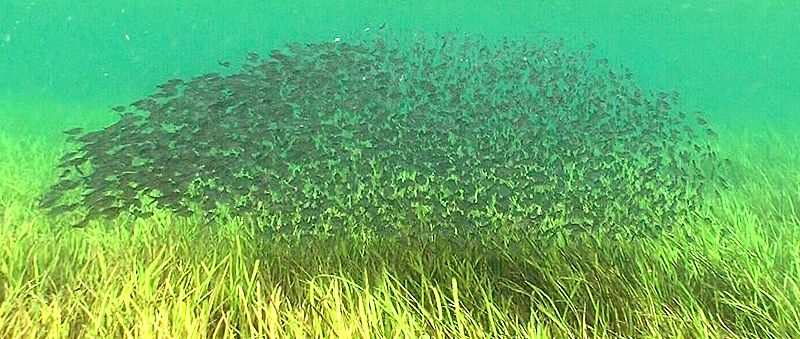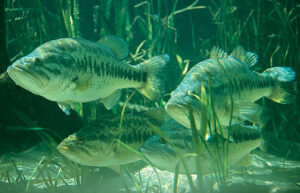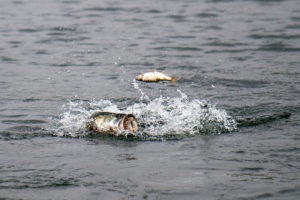
Why do cold fronts affect bass? Cold fronts are probably one of the most misunderstood weather conditions that face bass fisherman. We are going to break it down in a way so that it can be used as a tool to help you become a more consistent fisherman. There are several different things that happen in the water environment that cause bass to change how they feed.
As a cold front approaches the bio-metric pressure begins to fall. A falling barometer does a few different things that has a positive effect on the fishing and it’s all about the bait-fish. The Zoo-plankton in the water becomes buoyant as the barometer is falling and floats to the surface. The bait-fish, along with bass, are creatures of opportunity. The bait-fish take advantage of this easy opportunity to feed and the bass follow and feed on the bait-fish while they are pre-occupied with eating. With the Zoo-plankton on the surface the wind will very easily push them around the lake so fishing wind-blown banks becomes key during pre-front conditions. With all the increased activity the strike zone of bass increases and they are much more willing to chase baits. Fast moving baits are the most productive baits at this time like topwaters, crankbaits, spinnerbaits, and swimbaits.
Pre-front days are always the most active days to fish but just being on a pre-front day does not solely mean that the bass fishing will be good. Other factors go in, for instance having a flat windless day will often dull the fishing even though you are fishing before a front. With the conditions right however the days before a cold front can be some of the best. It can seem like everything you do is right. But however, after a cold front the fishing can become the exact opposite and this is where knowing the details can make or break you.
Now after a cold front there is always a high pressure system that follows. A key indicator of this change is a bluebird sky with no clouds. With this change the bio-metric pressure begins to rise and the barometer will go from one extreme to the other. This is not a good thing for fishing and there are a few reasons why. First bass don’t like extreme changes in bio-metric pressure. They are most active when the barometer is steady and neutral or the the first 6 to 8 hours of a falling barometer.
Now the same changes that happened with a falling barometer will happen with a rising one but in the opposite way. The Zoo-plankton while it was buoyant with a falling barometer is now non-buoyant when the barometer is rising. The Zoo-plankton then becomes harder for the bait-fish to feed on so instead of actively feeding they then hide and conserve energy. The bass intern do the same thing, they become inactive and conserve energy because the bait-fish become much harder for them to catch. It goes against a basses natural instinct to expend a lot of energy trying to hunt when the chances of them catching food is lowered.

It’s to there advantage to wait for a more productive time to feed. Also while the bass move up to the shallows to feed during a falling barometer they will do the opposite and move back out to deeper water during a rising barometer. The quick increase of pressure has an affect on there swim-bladder which makes them uncomfortable, moving out to deeper water helps neutralize this effect. So if you have deeper water near where you were catching them pre-front that is most likely where they have moved. If there is no deeper water nearby they will then move to the heaviest cover nearby.
During post frontal conditions the strike zone of bass also becomes very small and they become unwilling to chase baits. Slow moving presentations become key at this time. You want to keep your bait in the strike zone for as long as possible. Carolina rigs, jigs, drop-shots, and shaky heads are all good presentations. It is always good to down size your baits also, as the bass will be more willing to hit smaller finesse lures during this time.
This is the toughest condition of all to fish but if you understand the effects of barometer changes on the water environment you can use these guidelines to put you where the bass are; whether it is using faster baits in the shallows on a falling barometer, or slowing everything down on deeper structure on a rising barometer you have to tools to become a more successful angler. I hope that this article will make what happens in the water a little more clear, and if you enjoyed this article and would like to be notified when new articles are posted please feel free to sign up for our newsletter.
Bass wishes,
Capt. A. James Jackson

